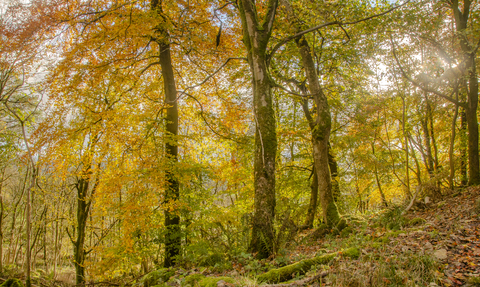
Burton Riggs Nature Reserve
Location
Know before you go
Dogs
Migrant birds and numerous waders present, please be considerate.
When to visit
Opening times
Open at all times. We recommend a 1 hour outing for this reserve but if you want an extended trip why not visit nearby Filey Dams, Harland Mount, or even explore the coast?Best time to visit
May to September, November to FebruaryAbout the reserve
Despite it’s urban surroundings, Burton Riggs has a rich mix of habitats and species. It owes its existence to the A64, having been created by gravel quarrying in the 1970s to help build the nearby road.
With two large, open lakes, several ponds, woodland, scrub and grassland, the site is an oasis that provides space to breathe and appreciate the birds, amphibians, mammals and flowers.
The expanses of freshwater make this a great place to watch wildfowl and waders, especially during autumn migration and over the winter. Ducks including pochard, goldeneye and tufted duck gather here with swans and geese, while oystercatchers use the islands, grey herons hunt for fish, and little egrets sometimes visit.
Take an early morning walk in spring and look for migrant birds in the scrub, such as common and lesser whitethroats, blackcaps, chiffchaffs and occasionally garden warbler.
Wander along the paths in June and July and you might be rewarded with two species of orchid – common spotted and pyramidal.
Contact us
About
An early morning walk in spring can reveal summer migrant birds in the scrub such as whitethroat, blackcap and chiffchaff, with the occasional garden warbler. Grey herons and sometimes a little egret are seen. In winter ducks including pochard and tufted duck gather. The ponds surrounding the lakes have been home to great crested newt for a number of years.
Burton Riggs is bounded mainly by industrial land and housing, which makes it a valuable oasis for wildlife and local people alike. As an artificial site created by gravel quarrying in the 1970s for the construction of the adjacent A64, it is relatively young in wildlife terms, but already has a rich mix of habitats and species to its name. A public footpath runs through part of the nature reserve underneath the A64 road bridge and out into the industrial area to the east. Permissive paths run around the entirety of the site, one route around the smaller lake specially designed for disabled access and the route around the larger lake being a rougher track with steps and boardwalks surmounting boggy and hilly parts.
Wildlife management includes keeping ponds clear from silting up, rotational coppicing of willow around the lakes and increasing the area of woodland so that there is a step-up from two to three patches around the site. The scrub is a vital habitat for small birds and mammals, and is retained as much as possible, only being cut back along the footpaths.
Seasonal highlights
- Spring: Plants - Cowslip; Birds - Willow warbler; Sedge warbler
- Summer: Invertebrates - Common darter; Gatekeeper
- Autumn: Birds - Green sandpiper; Grey heron
- Winter: Birds - Tufted duck; Pochard; Goldeneye; Short-eared owl
Directions
Public transport
Regular bus and train services in Scarborough.
By car
The nature reserve is situated just off the A64 out of Scarborough on the opposite side of the roundabout to the supermarket.
"Great place to go for a pleasant and peaceful stroll with the family or when you want to clear your mind and get some fresh air."Google Reviews
Can you help us?
With some extra funding and resources we could improve the habitat here for both wildlife and visitors. What would you like to see improved? Contact us.

The autumn colours were even more beautiful when the sun came out
Photo Credit - Telling our Story Volunteer, Sara



